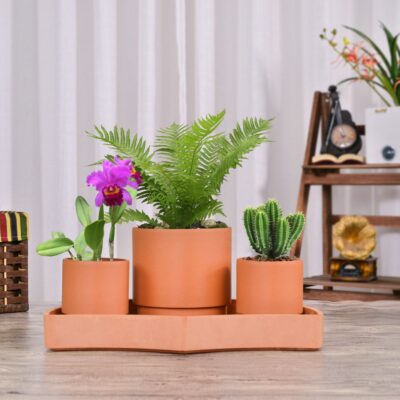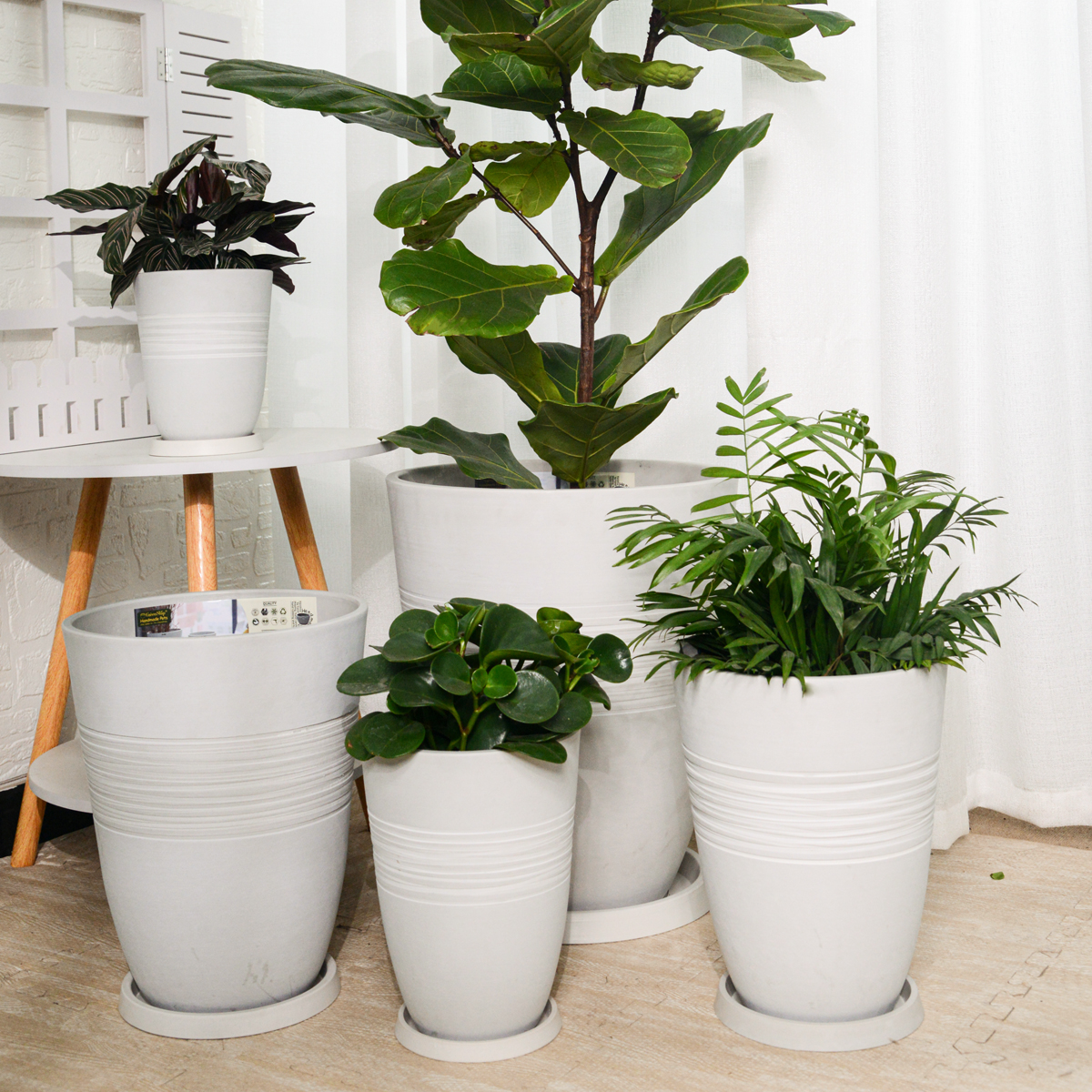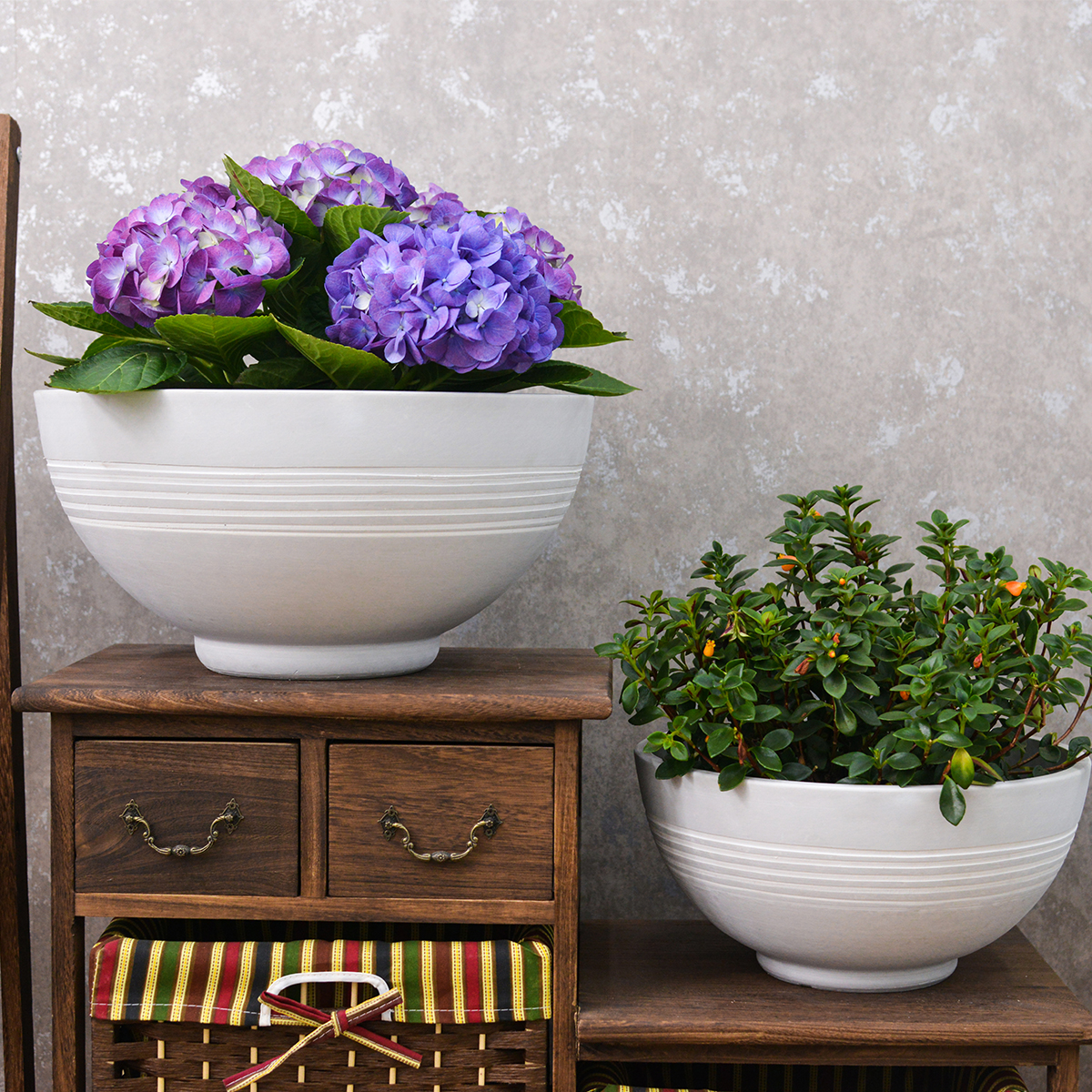Do self-watering planters really work
Yes, self-watering planters really do work and can be quite effective for certain plants and situations. They are designed to provide a consistent supply of moisture to plants, reducing the frequency of manual watering and helping to prevent both overwatering and underwatering.

Here’s a breakdown of how they work, their benefits, and some things to consider:
How Self-Watering Planters Work:
Self-watering planters, also known as sub-irrigated planters, typically use a reservoir system at the bottom of the pot to store water. The plant’s soil is separated from this reservoir by a platform or layer.Water is drawn up from the reservoir into the soil through capillary action, often aided by a wicking material like cotton or felt.
Here’s a simplified process:
- Water Reservoir: You fill the reservoir with water, usually through a fill tube or opening.
- Wicking Action: A wick or the porous material of the planter itself draws water from the reservoir upwards into the soil.
- Soil Moisture: The soil absorbs water from the wick, keeping it consistently moist but not waterlogged. The plant roots then draw water from the soil as needed.
- Airflow: Many self-watering planters also incorporate features to ensure good aeration in the root zone, which is crucial for plant health.
Benefits of Self-Watering Planters:
- Consistent Moisture: They provide a steady supply of water, preventing fluctuations between overly dry and overly wet soil, which can stress plants.This is especially beneficial for plants that prefer consistently moist soil.
- Reduced Watering Frequency: You don’t need to water as often as with traditional pots, which is convenient for busy individuals or when you are away from home.
- Water Conservation: They can be more water-efficient as water is delivered directly to the roots, reducing water loss through evaporation and runoff.
- Prevents Overwatering and Underwatering: By providing a reservoir and wicking system, they help to minimize the risk of both overwatering (if the drainage is well-designed) and underwatering, common mistakes in plant care.
- Promotes Healthy Growth: Consistent moisture and reduced stress can lead to healthier plant growth, better flowering, and fruit production in some cases.
- Convenient for Travel: They can be particularly useful when you travel, as they can sustain plants for longer periods without manual watering.
Things to Consider:
- Not Suitable for All Plants: Self-watering planters are best suited for plants that prefer consistently moist soil.Plants that prefer drier conditions, like many succulents and cacti, may not thrive in them and could be prone to root rot if the system is too efficient at keeping the soil wet.
- Importance of Drainage: While designed to prevent overwatering, it’s still crucial that the planter has some form of drainage and that the potting mix is well-draining.16 If the system becomes waterlogged, it can still harm plants.
- Potting Mix: Use a well-draining potting mix that is also capable of wicking moisture effectively. Heavy, dense soils may not work as well in self-watering planters.
- Maintenance: You still need to monitor the water reservoir level and refill it periodically. You also need to ensure the wicking system remains functional and doesn’t become clogged with soil or mineral buildup over time. Some systems may require occasional cleaning.
- Cost: Self-watering planters can be more expensive than traditional pots.
- Root Rot if Overfilled: If the water reservoir is consistently overfilled and the soil becomes waterlogged, root rot can still be a problem, especially for sensitive plants.

To verify if self-watering planters are effective, I used Google Search and found these resources:
WaterWise Gardening – Self-Watering Containers: Are They Really Better?: This article from Texas A&M AgriLife Extension discusses the benefits of self-watering containers, including reduced water use and less watering frequency. It also mentions that plants in these containers often grow as well as or better than those in traditional containers.
Epic Gardening – Self-Watering Planters: Do They Actually Work?: This article from Epic Gardening explains how self-watering planters function and highlights their advantages, such as preventing over and under-watering and reducing water waste. It also points out that they are not suitable for all plants, particularly those that prefer dry soil.
Gardening Know How – Self-Watering Planters: Info And Tips For Using Self-Watering Containers:Gardening Know How provides a guide on using self-watering planters, emphasizing their usefulness for busy gardeners and for maintaining consistent soil moisture. It also advises on choosing the right plants and monitoring water levels.
In conclusion, self-watering planters are a useful tool for gardening, especially for busy individuals or those who tend to over or underwater their plants.They can simplify plant care and promote healthy growth for many plant types, but it’s important to choose the right plants and use them correctly to maximize their benefits.
KC2-11VH
By greenship|2024-08-16T06:19:28+00:00August 16, 2024|Categories: Hand-carving Series|
Modern Plant Pots丨Planter for Indoor Plants,8 inch or 10 inch Plant Pots with Drainage Hole,Decorative Flower Pots
By greenship-seo|2025-04-10T08:32:55+00:00January 7, 2025|Categories: Hand-carving Series|Tags: Decorative Flower Pots, Self-Watering Pots|
20T
By greenship|2024-08-13T06:42:22+00:00August 13, 2024|Categories: Hand-carving Series|
Planter 6 in W / 8 in W / 12 in W Indoor or Outdoor Plants, Modern Decorative Plant Pots with Drainage Hole, Decorative Flower Pots
By greenship-seo|2025-02-06T13:43:53+00:00January 16, 2025|Categories: Hand-carving Series|Tags: Decorative Flower Pots|
KC3-09k
By greenship|2024-08-16T06:24:36+00:00August 16, 2024|Categories: Hand-carving Series|
k2-21G
By greenship|2024-08-13T06:17:26+00:00August 13, 2024|Categories: Hand-carving Series|






